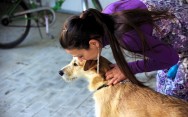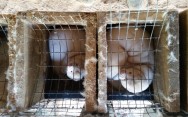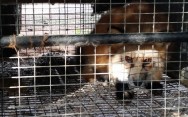Why Art Can’t Remain Indifferent to Animal Cruelty
Can art indifferently observe animal cruelty? The question came up this fall in a couple of ways. For a start, the Guggenheim withdrew three pieces from its show “Art and China after 1989: Theater of the World”, due to protests from animal rights activists. The most controversial piece, “Theater of the World” was a domed menagerie of insects and lizards preying on each other. These predators and prey were deliberately rounded up from New York pet shops and set upon each other until the weaker animals were dead.
When the Guggenheim withdrew the exhibits, some groups raised concerns about free speech. But though art may use living people and even animals to express its ideas, the idea of “free speech” breaks down when living creatures are harmed and cannot give their consent. The philosophy behind all animal cruelty is the idea that animals are objects for human use, rather than living, sentient creatures. Anyone should be free to represent animals through art or create animal-themed art, but harming animals for the sake of art should be no more acceptable than treating the subjects or models of paintings and photos poorly. The media tiptoed around the issue and the Guggenheim made no mention of ethical principles when they withdrew the exhibits. The Guggenheim stated that they were withdrawing the exhibits for the safety of staff in the face of threats from extremists. The wellbeing of the animals was not mentioned.
At London Fashion Week, protests drew attention to the use of fur in fashion. It may not be as acceptable to wear fur coats these days, but smaller items like hats, bags and jewelry are often trimmed with fur. The practice of sheep-shearing has also been debated as a venue for cruelty. Although it has been depicted as just a “haircut”, videos have shown animals are treated with terrible cruelty in some cases.
Then there is art that is ostensibly made for the purposes of showing animal cruelty to the world. “The Women Who Kill Lions” followed female hunters of big game. Instead of protecting big cats and wildlife however, it focused on the shock value of female hunters shooting big game. Even if the documentary makers set out with good intentions, it’s worth asking questions about whether art can represent animal cruelty and not intervene to protect animals. Can there be any venue where animal cruelty is just academic or aesthetic? Maybe for the consumers of art, but not for the animals who suffer.








Social Media